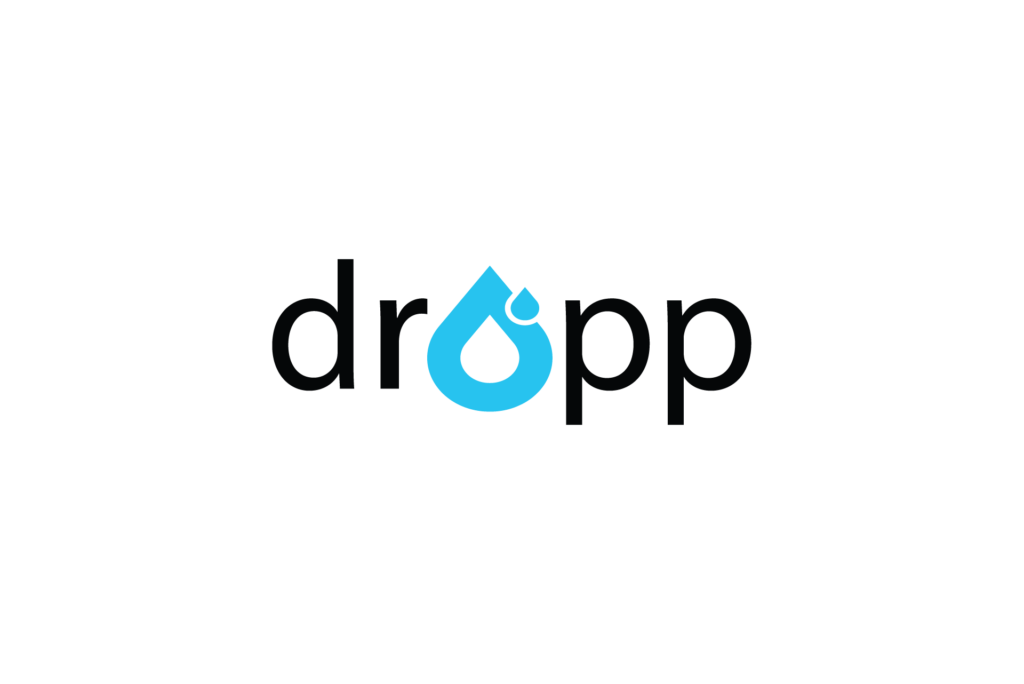The payments industry is
awaiting a ‘silver bullet’ universal solution to capitalise on the
growing interest in micropayments. Who would have thought €1
transactions would generate so much interest? Louise Naughton looks
at a new report that analyses the different approaches to low-value
payment processing.
The movement to digital content has
been a gradual process and one that has given way to a strikingly
different business model for many organisations, especially that of
the media.
Dwindling advertising sales has
forced many publications to introduce a paywall on their online
content offerings. In 2009, Rupert Murdoch’s News Corporation was
the first to try to monetise their publications’ digital content by
announcing online content would no longer be free.
Other big players in the media,
such as the Wall Street Journal and the Financial
Times, soon followed suit and in doing so have created a
culture in which people now expect to pay for access to news and
features from well-known national newspapers.
Subscription-based business models
represent the ideal case for digital content providers as they
generate regular and reliable revenue streams. But there is a
fundamental flaw in their design, since the model does not attract
single-use customers who do not want to commit to an on-going
commercial relationship.
How well do you really know your competitors?
Access the most comprehensive Company Profiles on the market, powered by GlobalData. Save hours of research. Gain competitive edge.

Thank you!
Your download email will arrive shortly
Not ready to buy yet? Download a free sample
We are confident about the unique quality of our Company Profiles. However, we want you to make the most beneficial decision for your business, so we offer a free sample that you can download by submitting the below form
By GlobalDataInternational consultancy firm
Value Partners has acknowledged this trend and has released a
report, Capturing the Micropayments Opportunity, which
analyses the status of the market and examines whether the
expectation placed on the industry is a realistic one.
“Through research and client
experience Value Partners has identified and presented a number of
critical success factors that any successful micropayments solution
will have to exhibit to successfully compete for a piece of this
growing opportunity,” says the report.
The report was published in
partnership with the Welsh Assembly Government and Cards
International’s parent company, VRL. It was launched by
Sheriff Fiona Woolf, on behalf of the Lord Mayor of London, at a
breakfast briefing in January.
Micropayments is one of a number of
areas the industry is keeping a close eye on but payment providers
have not yet brought a universally viable, cost-effective solution
to the market – at least not publicly.
On the one hand, this reluctance to
step out of the shadows and be the first to market with a
micropayments solution is understandable. It is a relatively new
phenomenon and its uncertainty can hinder investment plans. Value
Partners estimates the European micropayments market is currently
worth €6bn ($8bn) and is set to grow to over €15bn by 2015.
According to the report: “This
[prediction] corresponds to a 15% annual growth rate over the next
four years; a rate that is unique to micropayments and unparalleled
in most other channels or payment types.”
This projection should stir some
enthusiasm and drive the payments industry to quicken the creation
of a solution.

How low is
micro?
Micropayments are universally known
as low-value transactions but its definition can vary widely
between different organisations.
Alternative payment method PayPal
defines the term as “transactions of less than $12”, consultancy
firm InnoPay claims a “micropayment is a payment of very low value,
often under a euro” and advisory firm Cartio.com says it is where
“small sums are transferred from one person to an organisation
quickly and without fuss”.
For the purposes of the report,
Value Partners has defined micropayments as “an online or mobile,
real-time or deferred, financial transaction below €5, which
initiates the instantaneous delivery of digital goods.”
In an effort to explain the lack of
development in the industry, the report claims “online, cost and
technology constraints have so far hampered the development of
economical and convenient solutions to sub-€5 transactions”.
While there are a number of payment
services currently in use for processing micropayments, to-date no
emerging micropayment service has been able to fully address each
stage of the micropayments service experience. These stages include
customer reach, fast transaction speeds, economic individual
transaction costs and a simple payment user interface.
The report suggests the clients of
a micropayments service are collectively crying out for a universal
micropayments solution, which would introduce a level of
consistency and control over the market.
This would involve a collaborative
effort on behalf of the industry – a move that traditionally takes
a great deal of time to put into place due to different agendas
that usually, but not always, send conflicting messages.
Another challenge in the
construction of a universal solution is that there is fragmentation
on both the supply and demand side of micropayments – meaning
neither the payments industry nor the customers of such solutions
have a cohesive, clear view on how to proceed.
Value Partners claims there is
scope to increase its original prediction that the micropayments
market will grow to €15bn by 2015 but only if the market is at its
full potential. For this to occur, all suitable technologies,
including video on demand (VoD) enabled set-up boxes, fast
broadband connections and smart phone mobile devices, should become
ubiquitous across Europe.
Should this happen, the consultancy
firm says its projection would then double, taking its estimate to
€30bn.
Emerging business
models
The report classifies the available
and emerging business models serving micropayments into four
distinct categories – payment cards and payment service providers;
eWallets; aggregators, virtual payment interfaces, online payment
transfers and P2P internet payment service providers; and telcoms
and ISP billing systems.
“We have researched and interviewed
a number of online payment providers, both as part of our project
work and for this piece of research, from incumbent domestic and
payment schemes to new entrants,” says Francesco Burelli, principal
at Value Partners.
“We have also looked at the
potential of industry players in related industries to extend their
billing and payments capabilities into the micropayments space.
“Our research suggests, in line
with the current market situation, that it is unlikely any one
player will dominate the market. Rather there will be a number of
successful models each suitable to a specific industry, audience,
platform or type of transaction.”
Electronic payment cards,
traditionally Visa and MasterCard, currently serve the
micropayments business but it is difficult to see how they can
continue doing so.
While the networks provide their
clients with a strong payment infrastructure designed to cope with
a high volume of transactions, the cost of acceptance to merchants
arguably renders the micropayment almost worthless.
Value Partners worked with a major
media producer that collected small payments of between €1 and €2.
It faced fixed and variable charges ranging from 5% to 60% of the
transaction value. Broadly speaking, the report claims the general
cost of accepting card transaction varies between acquirers, which
has to take into account a fixed processing cost that can range
from €0.04 to €0.35.
“Fees of this kind can prohibit a
company from accepting micropayments and as a consequence puts
pressure on the industry to come up with a better solution,” says
the report.
Undeterred by the fees challenge,
the payment card industry is looking upon the micropayments
opportunity with excitement. One unnamed international card scheme
interviewed for the report said it saw a “significant opportunity”
associated with mobile payments as a potential extension of the
person-to-person (P2P)/money transfer value proposition.
An unnamed top-tier global payment
processor also told Value Partners that it has recently invested in
the growing micropayments processing opportunity.
However, as the report says, the
interest in the micropayments opportunity may be growing throughout
the payment card industry, but the issue around creating a “viable
price competitive offering” is not going away.
eWallets store their value in
either real or virtual currencies and is typically funded through a
payment card or automated clearing house (ACH) transaction – ie,
credit transfer or direct debit.
It is claimed to represent an
effective solution for those merchants and consumers willing to
engage in a “dedicated payment relationship”. This is because
merchants benefit from prepayment and low transaction frequency, as
the transaction costs can be spread over a number of micropayments,
and consumers enjoy a perceived seamless and instantaneous
functionality.
Value Partners warns those eWallet
providers interested in developing a micropayments opportunity to
be conscious of the payment provider’s role in the user’s payment
experience and the ownership of the client’s financial
arrangement.
“While the offering might be
convenient and well-designed, the merchant must surrender the
financial relationship to the third party eWallet as well as access
to the most granular customer data,” says the report.
Players in the aggregation, virtual
payment interface, online payment transfer and P2P internet payment
markets often have a similar business model to those of eWallets.
The payment is initiated by an account and password authentication,
and the transaction funded in real-time by a card or ACH
transaction.
As the funds are not pre-loaded,
the cost of the transaction can be higher than that of a payment
card or ACH transaction as an additional cost layer is added.
Again, the report says the pitfalls
of such a solution are that digital content providers lose
ownership of the customer as well as a lack of control over
deposited funds. Aggregators are also closed-loop, which forces a
customer to maintain multiple log-in details with multiple
merchants.
A well-known example of an
aggregating business model is Apple’s iTunes store. It monetises
its low-cost music and app purchases by aggregating up consecutive
payments.
“Apple does not process each
purchase separately but delays processing with the expectation that
as customers tend to buy music in waves, the customer is likely to
make subsequent purchases at the iTMs in the near future,” says the
report.
“By consolidating a series of
purchases, Apple makes a smaller number of larger transactions and
therefore pays a smaller amount overall due to processing
costs.
“If Apple were to incur typical
payment costs in the region of £0.50 per transaction, given that
record companies typically get up to 70% of the sale price as
royalties, this level of payment cost would render the business
unviable.”
Telecom companies and Internet
Service Providers (ISPs) have begun to offer merchants third-party
billing services, which the report claims “exploits the telco’s
pre-existing financial relationships and billing
infrastructure”.
In light of developments such as
the opportunity to differentiate and exploitation of ‘sunk costs’ –
whereby proprietary billing systems can perform billing for the
operators core activity, Value Partners has seen increasing
investments being made by telecoms and ISPs operators.
While there are benefits to this
platform, the report outlines that “inherent limitations” exist in
the offering made by telcos and ISPs reselling their billing
capabilities.
“The merchant must surrender its
financial relationship with its consumer to the billing telco
operator and accept that its reachable customer base is restricted
to that of the telco’s own customer base,” says the report.
“Given that merchants are
traditionally reluctant to give up financial relationships and that
no telco operator can provide universal reach, there is likely to
be some development before this can occur.”
“As the industry grows we will see
more activity and it is probable there will be new entrants in the
medium term. However, as the overall model of any payments business
is dependent on achieving critical mass, we believe we are likely
to see a wave of consolidation taking place in the not too distant
future,” says Henry Alty, a consultant at Value Partners.
“However, as the overall model of
any payments business is dependent on achieving critical mass, we
believe we are likely to see a wave of consolidation taking place
in the not too distant future.”
New media
According to the report, TV
Video-on-demand (TV VoD) is poised to become the greatest growth
area for micropayments as it acts as a complement to existing TV
subscriptions and as a service allowing those consumers who choose
not to take part in pay-TV services, access to on-demand shows and
films.
Value Partners forecasts Europe
will grow to approximately 30% of the global TV video-on-demand
industry. PC VoD is expected to remain a relatively small part of
the total micropayments opportunity as it is likely to be
supplanted by TV VoD as it becomes easier and more convenient for
consumers.
The increasingly widespread
penetration of smartphones, as well as new app-based devices such
as tablets, is forecasted to drive the number of app users and more
importantly, more apps per device will increase the average revenue
per user.
The report claims it remains to be
seen how successful more general news providers will be in driving
revenues. Initial indications are that The Times’ paywall
has not been met with immediate success, with a reported 105,000
subscribers and pay-per-use consumers, including those who have
paid for the iPad and Kindle editions. There has also been a 62%
fall in monthly unique visitors.
As monthly subscriptions generally
exceed the €5 value of micropayments, Value Partners has only sized
one-off payments and has found them to be a relatively small
opportunity compared to other micropayments opportunities.
“Our research has indicated that
there are a number of critical factors that a successful
micropayments solution should fulfil,” says Alty.
“It will be necessary to ensure
that all the key constituents are satisfied – consumers, merchants
and regulators. This will involve tailoring the provider’s business
model to suit the type of product, customer and transaction that is
being undertaken, ensuring that the process is price-competitive
and maximising merchants’ ability to create a holistic view of
their customers and transactions.
“Any micropayments platform that
can meet these challenges will be well placed to take a share of
the growing industry.”
The report concludes there is
currently no single answer to the desire for a universal
micropayments solution and the aspiration for a ‘silver bullet’
solution is unrealistic.
“In order to capture the largest
potential customer base, it is suggested that a digital content
provider offers its customers a wide range of different payment
options driven by customer payment preferences and its ability to
condition, limit and drive them,” says the report.
The demands placed on micropayments, both from the consumers and
industry in finding a commercial solution is one that sits in the
early stages of development. Value Partners expects considerable
activity in the space over the next five years and believes this
will lead to short-term fragmentation of micropayment offerings
that will be tempered in the long-term by their economic viability
and user preference.







